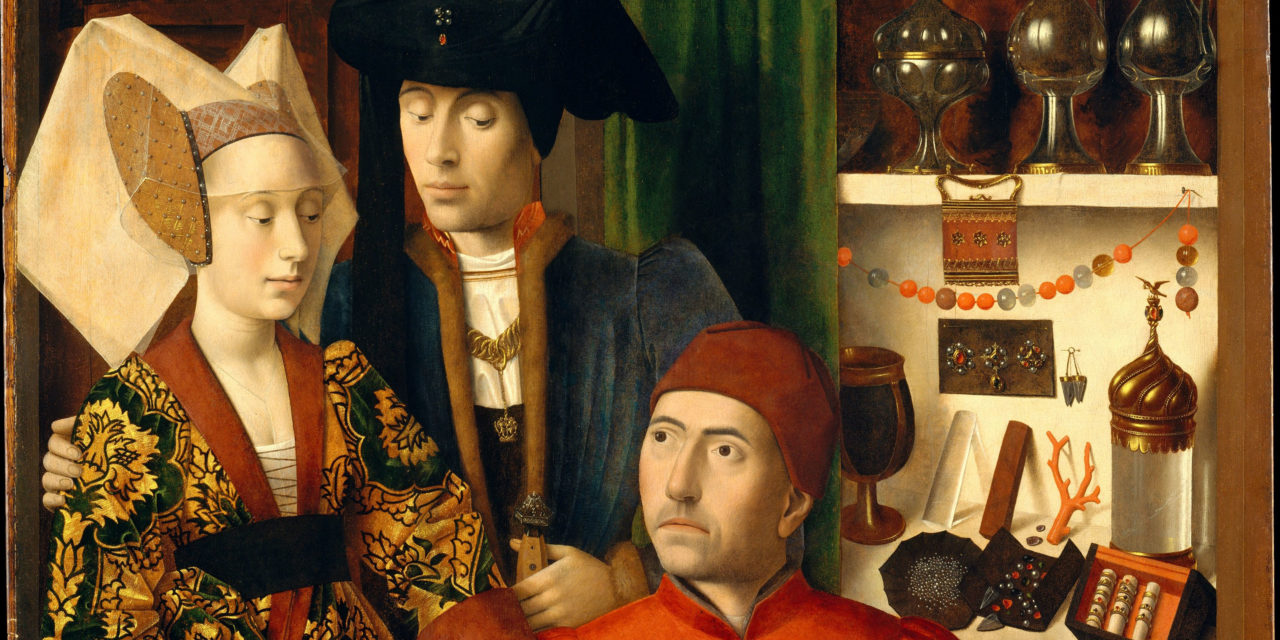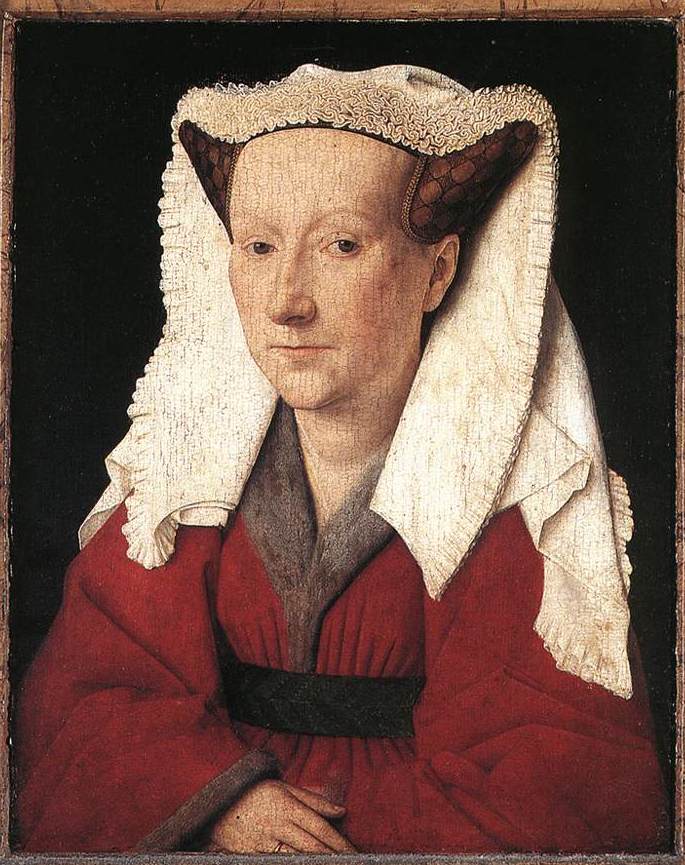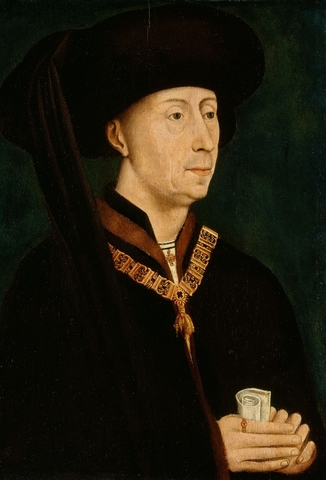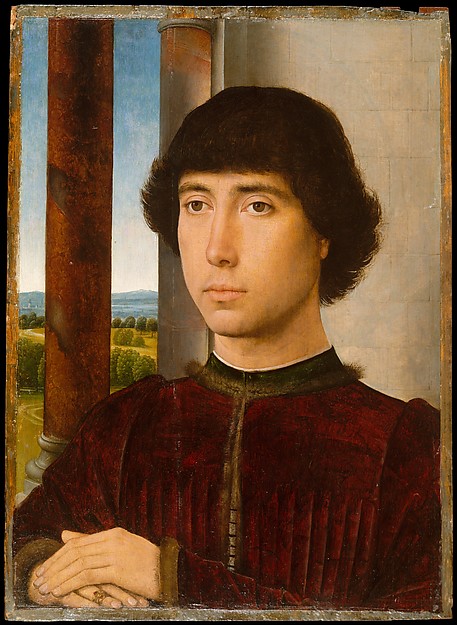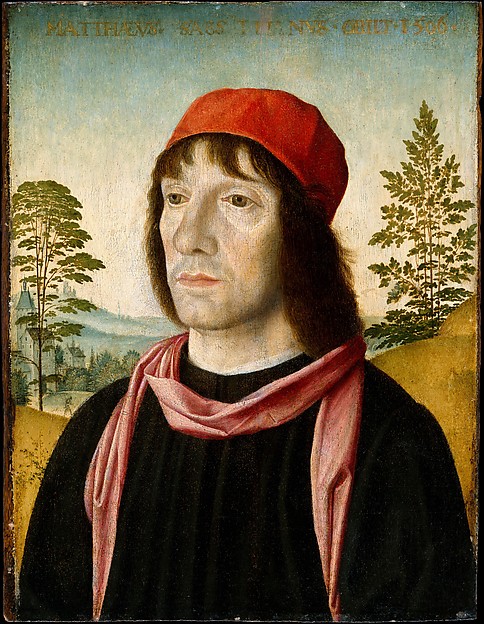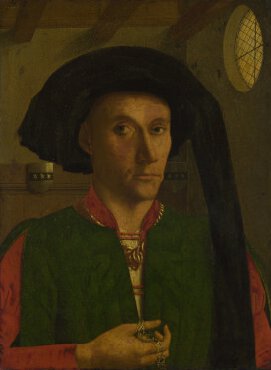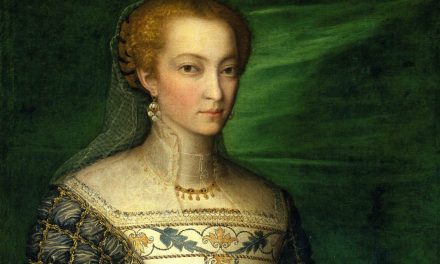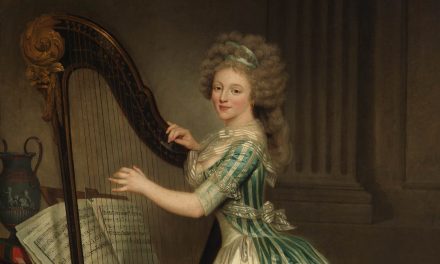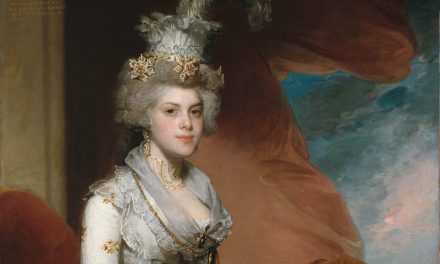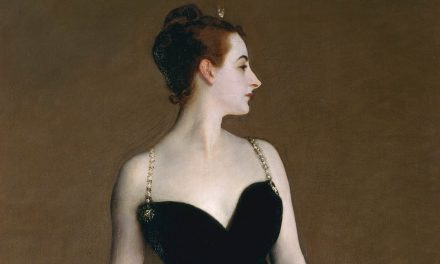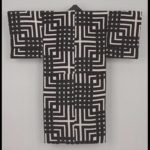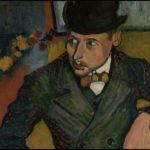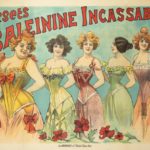Petrus Christus juxtaposes the lofty style of a wealthy couple preparing for their wedding with the more humbly dressed goldsmith and others.
About the Artwork
Petrus Christus was a South Netherlandish painter born in 1410 (died in 1475) who worked in Bruges for the majority of his lifetime. His career began in 1444 and soon after in 1449, he created A Goldsmith in his Shop. As art historian Marilyn Smith notes, Christus was one of the leading painters within the Northern Renaissance movement along with artists such as Jan Van Eyck and Rogier van der Weyden, who were best known for their meticulous attention to detail and symbolic meanings behind their paintings.
According to the Met, the primary figure within this painting represents Saint Eligius, the patron saint of goldsmiths. Underdrawings suggest that the seated figure could have been posed for by Willem van Vleuten, who often worked for Philip the Good, Duke of Burgundy, and was commissioned by the duke to create this painting as a gift for the other two figures standing behind him, Mary of Guelders and James II for their marriage. The two figures depicted in the reflection of the convex mirror have not been identified as anyone of major significance, but instead create contrast within the painting.
The nationality of the main figure, Saint Eligius is French, and the woman behind him, Mary of Guelders is of Netherlandish descent. The only other figure within the painting whose nationality is known is James II, who originated in Scotland. The couple behind the main figure are of wealthy and high societal status, while the two figures seen in the mirror are less likely to be of the same social standing. Saint Eligius’ status is significant in that it was meant to act as a balance between the figures (The Met).
Petrus Christus (Netherlandish, 1410-1475). A Goldsmith in his Shop, 1449. Oil on oak panel; 98 x 85.2 cm (38 5/8 x 33 1/2 in). New York: Metropolitan Museum of Art, 1975.1.110. Robert Lehman. Source: The Met
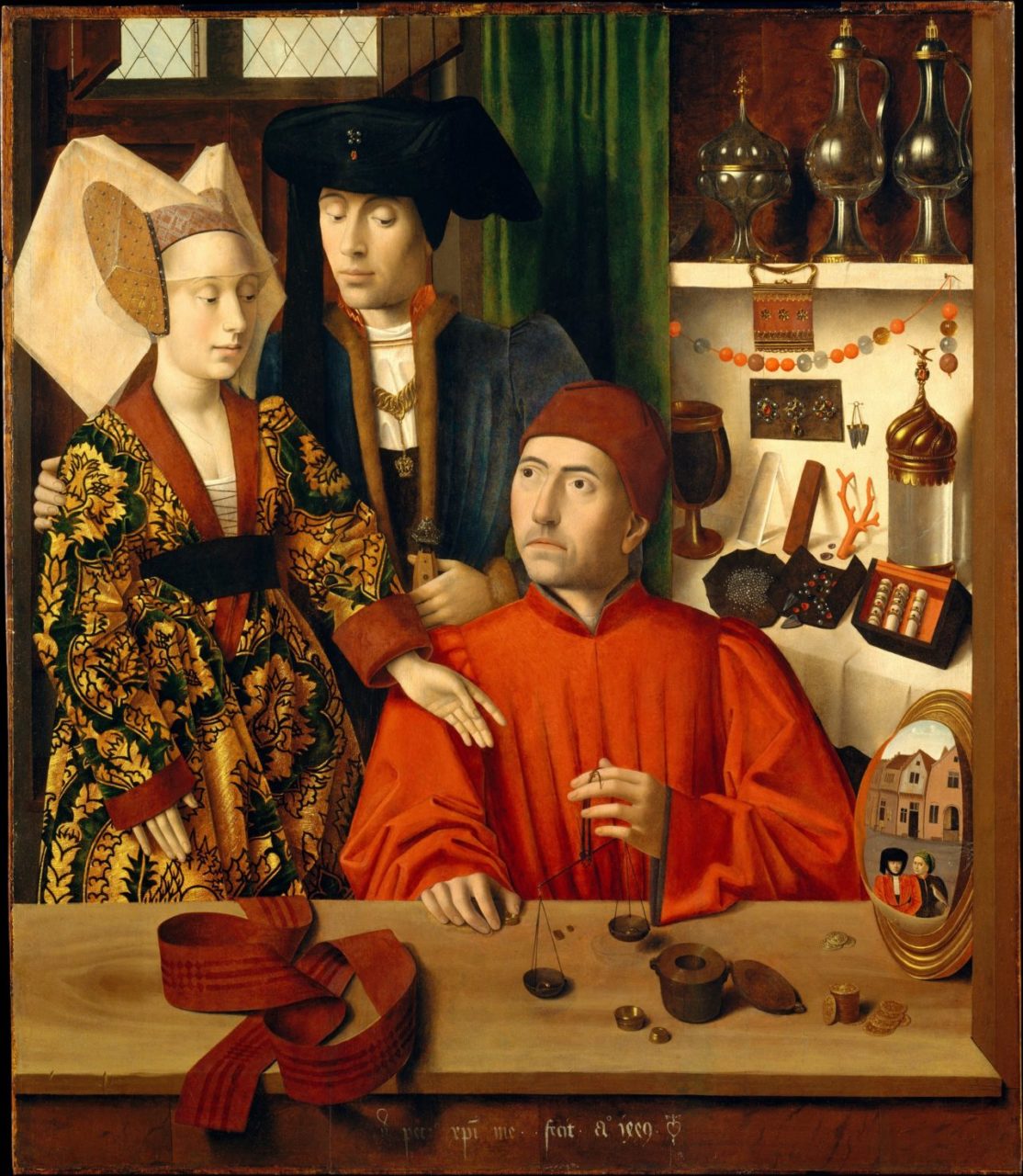
About the Fashion
The outfit worn by Mary of Guelders appears to be a 15th-century gown made of green silk voided velvet fabric, with extensive gold brocading, with a full skirt and black waistband placed underneath the bust, according to Margaret Scott in Late Gothic Europe, 1400-1500. The sleeves are dalmatic with a thick band of solid burgundy fabric around the hem of the wrist which matches the neckline of the dress. Underneath the gown appears to be a chemise with lacing across the bust. In terms of accessories, she is wearing a horned veil also seen in figure 3, but with metallic and beaded accents across the headdress. She is also depicted wearing a silver necklace hanging around her neck, similarly seen in figures 1 and 2 (Scott 146).
James II wears a silk velvet houppelande with vertical pleating along the front and presumably along the back of the garment. It has brown fur trim around the hem of the wrist and neckline, and exposes what seems to be a patterned doublet and shirt underneath. Around his neck are two rows of lacing tied to the doublet. The man is also shown wearing jewelry and gems in various places. For instance, his chaperone-styled hat has black and red beading in the center and he wears a thick gold chain with what looks like a crown pendant dangling around his neck. There is additional beading and decoration on the top of his staff. He possesses an hourglass figure due to the band cinching his garments in at his natural waistline. Although James II’s lower body is not depicted, it is likely that he and Saint Eligius would have worn poulaines with pattens (Scott 146-148).
As for Saint Eligius’ attire, he also is shown wearing a pleated, silk velvet houppelande although his seems to be rather simple and modest compared to that of James II, possibly because of his occupation. His sleeves are also much wider and create bigger folds than other garments shown within the painting. His houppelande seems to be lined in fur and the collar is very high and stiff, giving the appearance of a modern day Mandarin-styled collar. Although his garment is closed, restricting the viewer from seeing other layers of clothing he is wearing, most likely Saint Egligius wore a doublet or plain linen garment underneath his gown as shown in the figure behind him. As Scott notes, he has a small, brimless cap on and no other obvious adornments or accessories. The figure being reflected in the mirror on the left-hand side is shown wearing a chaperone wrapped around his chin and an open, pleated, silk velvet gown or houppelande, exposing gold chain jewelry and a doublet underneath. To the right of him shows a man wearing a closed outergarment (most likely a houppelande) with a high collar underneath his outer layer, similar to Saint Eligius’ garment. His hat is slouched and baggy looking, but not in the same form as the other men’s chaperones (Scott 146-148).
Fig. 1 - Workshop of Rogier van der Weyden (Netherlandish, 1399/1400-1464). Portrait of Isabella of Portugal, 1450. Oil on panel; 46 x 37.1 cm (18 1/8 x 14 5/8 in). Los Angeles: The J. Paul Getty Museum, 78.PB.3. Source: The Getty
Fig. 2 - Artist unknown (Netherlandish). Portrait of a Noble Woman, Probably Isabella of Portugal, 1397-1472. Oil on wood; 34.6 x 27 cm (13 5/8 x 10 5/8 in). New York: The Metropolitan Museum of Art, 50.145.15. Bequest of Mary Stillman Harkness, 1950. Source: The Met
Fig. 3 - Jan van Eyck (Flemish, 1390-1441). Portrait of Margareta van Eyck, 1439. Oil on wood; 25 x 32.6 cm (9.8 x 12.8 in). Private Collection. Source: Flemish Primitives
Fig. 4 - Rogier van der Weyden (Netherlandish, 1399-1464). Philip the Good, Duke of Burgundy (1396-1467), 1445. Oil on panel; 31.9 x 22.3 cm (12.6 x 8.8 in). Windsor: Royal Collection, RCIN 403440. Source: Royal Collection Trust
Fig. 5 - Hans Memling (Netherlandish, 1430-1494). Portrait of a Young Man, 1472-75. Oil on oak panel; 40 x 29 cm (15 3/4 x 11 3/8 in). New York: The Metropolitan Museum of Art, 1975.1.112. Robert Lehman Collection, 1975. Source: The Met
Art historian Christine Zappella explains that couple standing behind Saint Eligius is of wealthy status (James II was king of Scots and Mary of Guelders later became the queen consort of Scotland), and were in a small shop in Bruges presumably to have their wedding bands made. Due to the couple’s social status, their clothing is much more regal, expensive, and intricate compared to the majority of society’s clothing during this period. She goes on to write that even Saint Eligius was more significant than other goldsmiths, although his clothing is rather modest compared to the couple, as Philip the Good, duke of Burgundy, heavily relied on him to create various gifts like the gold wedding rings seen on the scale within this artwork (Zappella).
Robert Netherton explains in Medieval Clothing and Textiles (2017) that women’s fashion throughout the 1440s focused on having the appearance of a protuberant abdomen. Throughout the 1400s, women were often seen wearing a belt under the bust to shorten the appearance of their waists and wore an abundance of thick brocaded velvet making up their gowns to allude to a more plump and therefore healthy or lively body (Netherton 338). Blanche Payne, author of The History of Costume series, expresses how Mary of Guelders clearly demonstrates this trend and is wearing copious layers of fabric and an extremely flared gown which she is able to afford, again due to her status. In addition to keeping up with the trends of her time period, Mary of Guelders is also seen wearing a horned veil fixed with jewels and sheer fabric on top which symbolized wealth. Most women could not afford accessories such as this, and although this sort of hat was prevalent and fashionable at the time this painting was created, it was not as common among society due to its price (Payne 240-246). Portraits of Isabella of Portugal (Figs. 1 & 2) are closely relating to the depiction of Mary of Guelders in terms of dress and status.
Payne also explains that popular menswear of the period generally followed an hourglass silhouette or were very long and gown-like, and generally had an exuberant air compared to menswear of earlier periods in history. As seen in the painting, in addition to figure 5, “stylish” menswear consisted of silk velvet fabric and long pleats in the front and back of the garment. Similarly to Mary of Guelders, James II in this painting is able to afford higher quality and more opulent pieces of clothing and accessories. His jewels around his neck, also seen in figures 4 and 7, flaunt his wealth and give him a more striking and fashionable appearance (Payne 215). On the other hand, Saint Eligius and the two men outside the shop are not as wealthy as the couple, which is most apparently communicated through the simple clothing; a small cap, similar to the hat on figure 6 and simple outer garments without the gold or fur accents seen throughout the outfit of James II. Although all styles seen above were fashionable options in terms of menswear in the mid 1400s, the degree of fashion varied depending on one’s wealth at the time.
Fig. 6 - Fra Bartolomeo (Italian, 1472-1517). Portrait of a Man, 1497. Oil on wood; 39.7 x 30.8 cm (15 5/8 x 12 1/8 in). New York: The Metropolitan Museum of Art, 1982.60.8. The Jack and Belle Linsky Collection, 1982. Source: The Met
Fig. 7 - Petrus Christus (Netherlandish, 1410-1475). Edward Grimston, 1446. Oil on oak; 32.5 x 24 cm (12.8 x 9.5 in). London: The National Gallery, L3. On loan from the Earl of Verulam. Source: The National Gallery
References:
- Boucher, François. 20,000 Years of Fashion: The History of Costume and Personal Adornment. New York: Abrams, 1966. http://www.worldcat.org/oclc/990429904.
- Netherton, Robin, and Gale R. Owen-Crocker, eds. Medieval Clothing and Textiles. Volume 13. Suffolk, England ; Rochester: The Boydell Press, 2017. http://www.worldcat.org/oclc/1002130666.
- Payne, Blanche. History of Costume: From the Ancient Egyptians to the Twentieth Century. New York: Harper Collins, 1990. http://www.worldcat.org/oclc/777277049.
- “Petrus Christus | A Goldsmith in his Shop | The Met.” The Metropolitan Museum of Art, i.e. The Met Museum. Accessed November 24, 2017. https://www.metmuseum.org/art/collection/search/459052
-
Scott, Margaret. Late Gothic Europe, 1400-1500. History of Dress Series. London: Mills & Boon, 1980. http://www.worldcat.org/oclc/959000554.
- Smith, Marilyn. “Christus, Petrus.” The Oxford Companion to Western Art. Oxford Art Online. Oxford University Press, accessed November 18, 2017, http://www.oxfordartonline.com/subscriber/article/opr/t118/e544.
- Tortora, Phyllis G., and Sara B. Marcketti. Survey of Historic Costume. 6th ed. New York: Fairchild Books, 2015. http://www.worldcat.org/oclc/967772873.
- Zappella, Christine. “Christus, A Goldsmith in his Shop.” Khan Academy. Accessed November 30, 2017. https://www.khanacademy.org/humanities/renaissance-reformation/northern-renaissance1/christus/a/christus-a-goldsmith-in-his-shop

